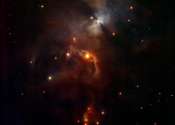A super-resolution microscopy method for rapid differentiation of molecular structures in 3D
Super-resolution microscopy methods are essential for uncovering the structures of cells and the dynamics of molecules. Since researchers overcame the resolution limit of around 250 nanometers (while winning the 2014 Nobel ...








